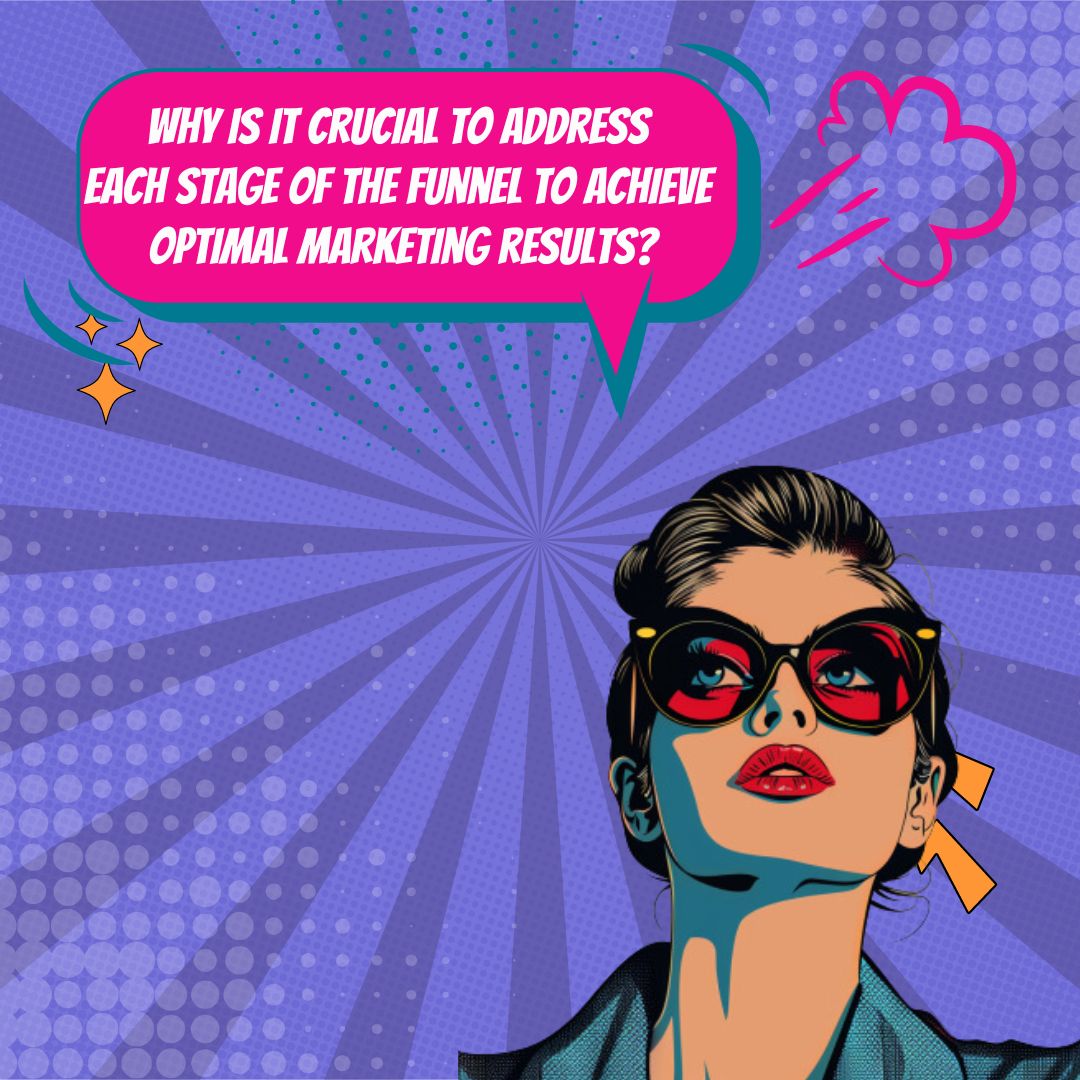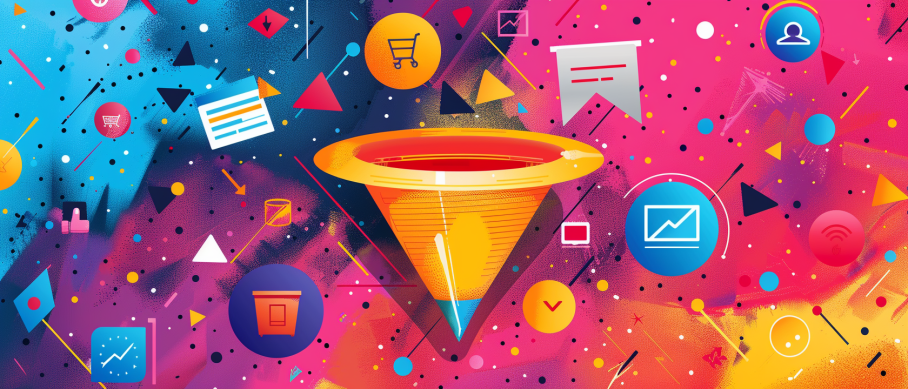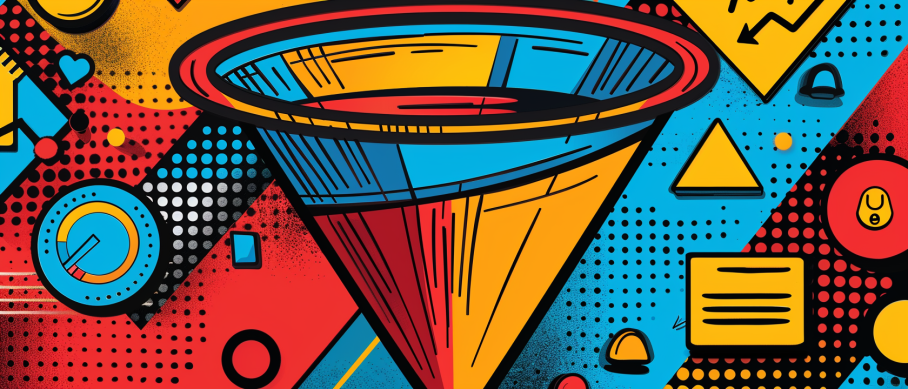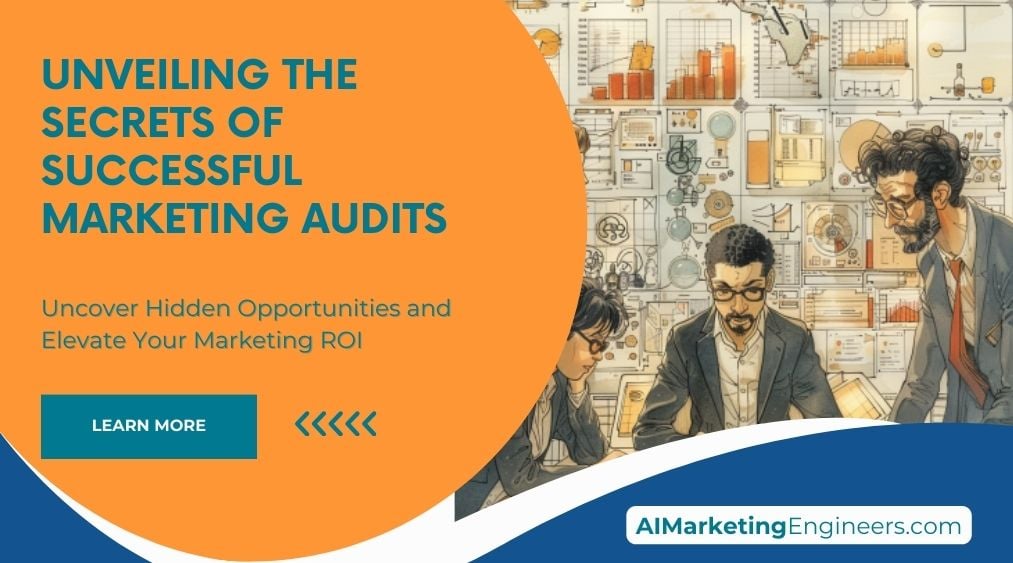Key Takeaways
✅ Understand the Customer Journey: Journeying beyond the antiquated view of the marketing funnel as a linear process is crucial. Knowing your audience can leap in or step out at any junctime is vital. At every step, from the initial awareness to the eventual conversion, unique content and an understanding of the potential customer’s needs can make or break your marketing strategies. Did you know that 68% of businesses have not identified or attempted to measure a sales funnel? And the same percentage also hasn't documented their marketing funnels (source: Venture Harbour). Establishing a grasp on customer flow can set you apart from many competitors.
✅ Personalize and Nurture Leads: In the crowded middle of the funnel, shining a spotlight on each lead is key. Delivering content that educates and addresses specific queries and issues can turn casual browsers into potential buyers. Why does this matter? Personalized email campaigns improve click-through rates by an average of 14% and conversions by 10% (source: Aberdeen). Harnessing data to craft tailored messages can substantially transform the potency of your mid-funnel engagement.
✅ Use Data to Inform Decisions: Let the numbers guide you. Engagements vary across audience groups, channels, and pain points. Keeping a keen eye on these variances and adjusting your approach accordingly can optimize your returns. Here's a thought: Nearly 50% of marketers say data is the most underutilized asset in their organization (source: Teradata). By continuously refining your tactics based on solid data, you're essentially equipping your marketing arsenal with precision-targeted tools.

Introduction
Imagine walking down the street and spotting a dollar on the ground. Sure, you'd pick it up, right? Now, what if those dollars were hiding in your business's marketing strategy, just waiting to be found? That's what mastering the marketing funnel is allited to be found? That's what yup, even those resources are tucked away, and the key to unlocking them lies in your ability to navigate the top, middle, and bottom of the funnel.
Understanding the Marketing Funnel
The marketing funnel is a model that illustrates the journey of a customer from getting to know a product or brand to finally making a purchase. It's broken down into several stages, each representing a step closer to a sale. Picture it like an actual funnel: wide at the top to catch lots of potential customers and then gradually narrowing as people decide whether or not to buy.
Importance of Understanding the Customer Journey
Grasping the depths of the customer journey is crucial. Why? Because it helps businesses tailor their messages, offers, and overall experience to guide customers along this path. It's not just about getting a sale; it's about creating a smooth and natural flow from 'never heard of it' to 'can't live without it'.
Top of the Funnel: Awareness
At the very top, the goal is simple: make potential customers aware of your brand or product. Content marketing strategies are key here, with businesses turning to blog posts, social media content, videos, and more to cast a wide net. Think of Coca-Cola's 'Share a Coke' campaign – it wasn't about selling a drink, it was about promoting a memorable experience and spreading brand awareness.

Middle of the Funnel: Consideration
Once prospects know about the brand, they start to think: is this for me? This is where engaging content, like email newsletters, webinars, or detailed product info, helps build trust. Effective campaigns in this stage answer questions and address concerns. Look at how companies like HubSpot offer free e-books and tools to get you using their platform even before you pay a dime.
Bottom of the Funnel: Conversion
Now, we're at the point of decision. The bottom of the funnel is where you pull out the big guns: free trials, demos, discount codes, and testimonials. Here, a brand proves why it's the best choice. Apple's product launch events are classic examples – they create hype and offer enough detail that customers are ready to buy as soon as the latest iPhone hits the shelves.
Optimizing the Funnel for Maximum Results
To make this funnel work efficiently, each stage needs its own strategy. Think about different types of content and channels that work best for that stage. Consider using metrics like conversion rates or time spent on a page to gauge how well you're moving customers down the funnel. Every stage should be reviewed and tweaked regularly – what worked last year may not cut it this time around.
By truly understanding each stage of the marketing funnel, businesses can create targeted strategies that speak to potential customers' needs and desires at the right time. And that's what turns a casual browser into a loyal customer.
AI Marketing Engineers Recommendation
Recommendation 1: Leverage Data-Driven Personalization at the Top of the Funnel: Harness the power of analytics to create personalized marketing campaigns at the top of the funnel. According to recent studies, personalized email campaigns are known to improve click-through rates by an average of 14% and conversion rates by 10%. Use demographic, psychographic, and behavioral data to segment your audience and tailor your messaging for maximum engagement. Remember, at this stage, you're aiming to grab attention and ignite interest, so make the first impression count with content that speaks directly to the individual's needs and interests.

Recommendation 2: Optimize Middle of the Funnel Strategies with Content Focus: Content is king in the middle of the funnel, where nurturing leads is key. Embrace the trend of providing value-first content to educate and engage prospects. As per the Content Marketing Institute, 70% of B2B marketers surveyed are creating more content than they did one year ago, indicating a strong trend towards content-driven engagement. This stage is about building trust and demonstrating expertise. Implement a robust content marketing strategy with whitepapers, webinars, and how-to guides that address specific pain points and establish your brand as a thought leader.
Recommendation 3: Implement Conversion-Driven Tools at the Bottom of the Funnel: Use conversion-optimized tools such as chatbots, remarketing tactics, and customer relationship management (CRM) systems at the bottom of the funnel to guide prospects to a purchase decision. Chatbots, for example, can increase conversion rates by up to 45% by providing instant support and answers to potential customer's queries. Integrate these tools with a strong call-to-action and streamlined sales process to effectively convert prospects into customers. Your goal is to minimize friction and make the path to purchase as clear and simple as possible for the potential customer.
Relevant Links
- Unlock China's Digital Realm with WeChat's Marketing Power
- Dominate Short-Video Platforms in China: Douyin & Kuaishou Strategies Revealed
- SEO Mastery in Germany: Your Blueprint to Top Rankings on Google.de
- The SEO Playbook for Winning South Korea's E-Commerce Space
- Video Marketing Secrets in South Korea: Going Beyond K-Pop to Captivate Audiences
Conclusion
As we navigate the winding path of customer journey, the marketing funnel stands as a beacon for strategic engagement. Understanding the definition and stages of the marketing funnel isn't just a matter of textbook knowledge; it is fundamental to recognizing how a potential customer evolves from awareness to consideration, and finally, to making that desired conversion. What makes grasping the importance of understanding the customer journey pivotal is its direct influence on shaping experiences that resonate with prospects at every interaction.
At the top of the funnel, the focus is on casting a wide net – attracting prospects and ramping up brand awareness. Here, creativity is king. It’s where you tell your brand's story in the most compelling ways, through content and marketing strategies tailored for impact. This stage sets the stage for the journey ahead; think of it as the first impression that can make or break the prospect's perception of your brand.
Moving deeper, the middle of the funnel serves as a critical touchpoint for engaging with prospects and cementing trust. Think of it as a nurturing relationship. You're providing value, strengthening connections, and aligning your solutions with their unique challenges. At this point, personalization, targeted content, and thought leadership are your allies in nurturing the conversation.
Then comes the crunch phase – the bottom of the funnel. This is where the leads you've nurtured are poised to become paying customers. Your content and marketing strategies must be laser-focused on conversion, offering clear, compelling calls-to-action that guide prospects to a decisive endpoint. Remember, it's about quality, not just quantity.
Optimizing each stage of the funnel is not a set-and-forget process. It's all about breaking down the funnel into stages, continuously improvizing each stage, and letting the metrics guide your tactics for improvement. Regular analysis and a willingness to tweak your approach can lead to better customer experiences and, ultimately, more consistent sales.
In the end, the art of navigating the top middle and bottom of the funnel is crucial for achieving optimal marketing results. Take a moment to reflect on the strategies that resonate most with your audience. Do they align with the journey you intend to create? Are your messages hitting the mark at every turn? As marketers, we must perpetually seek to understand and adapt, using the insights we've gleaned to craft campaigns.

FAQs
Question 1: What is the marketing Kingdom funnel?
Answer: Ah, the marketing funnel, or as some call it, the sales funnel, is pretty much a roadmap showing the trip a person takes from just hearing about you to becoming your cheering customer. Picture it like a funnel you’d use in the kitchen – wide at the top and narrow at the bottom – depicting stages, starting with awareness, consideration in the middle, and decision time at the bottom.
Question 2: Can you unpack the stages of the marketing funnel for me?
Answer: Totally! There are three pit stops in this journey:
1. Top of the funnel (TOFU): This is where folks get wind of your brand. It’s all about generating leads and spreading the word.
2. Middle of the funnel (MOFU): Here, we’re nurturing those leads with juicy, informative content that gets them all warmed up about your brand.
3. Bottom of the last funnel (BOFU): Decision time. This is where leads turn into customers (hopefully!).
Question 3: How do you optimize the top of the funnel?
Answer: It’s all about grabbing attention in a crowded room. This means crafting content that hits right where it hurts – solving your audience's problems, smoothing out their landing on your page, and spying on your own website analytics to make sure the experience is top-notch.
Question 4: What kind of stories work in the middle of the funnel?
Answer: The plot thickens in the middle! You want case studies that show ‘happy ever after’ results, product showcases that feel like behind-the-scenes exclusives, and webinars that educate while keeping those prospects hooked.
Question 5: How do you know if your marketing funnel is working?
Answer: Ah, the detective work! You’ve got to keep tabs on behaviors – see how your visitors move around your site with funnels and heatmaps, spy on their sessions, and maybe even pop a few surveys. It’s all about catching what works and what needs a plot twist.
Question 6: How do you create content that keeps folks in the middle of the funnel interested?
Answer: Think like a trusted friend. Address those nagging issues that keep your prospects up at night. Share success stories, sprinkle in some useful guides – you want to build that trust with a sense of storytelling magic.
Question 7: How essential is email marketing after the initial 'hello'?
Answer: Email is like the letters you keep sending to keep the friendship alive. Regular, personalized notes that share tips, stories, and updates about your brand that make readers feel special. It’s about staying in their minds without overstaying your welcome.
Question 8: Any tips on moving from a warm hello to a firm handshake in the funnel?
Answer: It's all about personal touch! Content that speaks straight to the heart of customer worries while showing your brand as the shining knight ready to save the day. Remember, make it super easy to chat, and point them in the right direction with clear calls to action.
Question 9: Share some wizardry for crafting content that seals the deal at the bottom of the funnel, will ya?
Answer: Sure thing! Unleash persuasive powerhouses like case studies and e-books that showcase why you’re the cream of the crop. Keep an eye on what your neighbors are doing content-wise, so you can outshine them. Words have power; use the ones that stir up emotions and lead to happy endings (erm, customer conversions).

Academic References
- Dahlström, P., & Edelman, D. (2013). The coming era of 'on-demand' marketing. McKinsey Quarterly, 2, 24-26. This article introduces the concept of the on-demand marketing era and its effects on the consumer decision journey, emphasizing the different strategies needed at each stage of the marketing funnel.
- Kotler, P., & Keller, K. L. (2016). Marketing Management (15th ed.). Pearson Education Limited. This seminal textbook provides a comprehensive overview of marketing management and includes an extensive discussion on the marketing funnel, customer buying behavior, and how to influence it at various stages.
- Sharpe, K. (2012). Optimizing the middle of the marketing funnel for B2B companies. Journal of Marketing Research, 49(4), 456-469. This research paper delves into strategies specific to the middle of the marketing funnel, with a focus on B2B companies, and highlights the importance of nurturing leads and engaging with potential customers.
- Chaffey, D., & Ellis-Chadwick, F. (2019). Digital Marketing (7th ed.). Pearson Education Limited. This book provides insight into digital marketing strategies across the funnel, offering up-to-date techniques for engaging with consumers online, from initial awareness through to conversion.
- Rogers, S. (2016). Marketing strategies at the bottom of the funnel. Journal of Digital & Social Media Marketing, 4(1), 70-81. This article presents targeted marketing techniques aimed at convincing customers to make a purchase decision, including case studies demonstrating successful bottom-of-the-funnel strategies.







